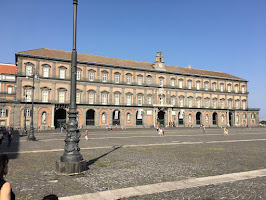Alessandro La Marmora - military general
Founder of Italy's famed Bersaglieri corps
The general who founded the Italian army's famous Bersaglieri corps was born on this day in 1799 in Turin. Alessandro Ferrero La Marmora was one of 16 children born to the Marquis Celestino Ferrero della Marmora and his wife Raffaella. The family had a strong military tradition. Alessandro was one of four of the male children who grew up to serve as generals. La Marmora was a captain when he came up with the idea for the Bersaglieri in 1836. He had spent much time in France, England, Bavaria, Saxony, Switzerland, and the Austrian county of Tyrol studying armies and tactics and he approached King Carlo Alberto of Piedmont-Sardinia with the idea of creating a new corps of light infantry. He envisaged a mobile elite corps similar to the French chasseurs and Austrian jägers, trained to a high physical level and all crack marksmen. He suggested they should act as scouts, providing screen for the main army,operate as skirmishers and use their sharpshooting skills to weaken the flanks of the enemy during a battle. From this proposal emerged the Bersaglieri, soldiers who were trained to be bold, carrying out their duties with patriotic fervour despite personal danger. Read more…
____________________________________
Gianluigi Lentini - transfer record breaker
AC Milan outbid Juventus for Torino star
Gianluigi Lentini, who was for four years the world's most expensive footballer, was born on this day in 1969. A winger with Torino known for outstanding dribbling skills, crossing accuracy and lightning pace, Lentini was the subject of a fierce bidding war between Torino's city neighbours, Juventus, and defending Serie A champions AC Milan in the summer of 1992 which ended with Milan paying a fee of around £13 million for the 23-year-old star. It was the second time in the space of a few weeks that Milan had paid a world record sum for a player, having signed the French striker Jean-Pierre Papin from Marseille for £10 million. At a time when the Italian league was awash with cash,the Papin record itself had been eclipsed a short while before the Lentini deal was agreed when Juventus paid Sampdoria £12 million for striker Gianluca Vialli. The Lentini record would remain until Newcastle United forked out £15 million for the Blackburn and England striker Alan Shearer in 1996. Born in Carmagnola, a small town around 30km (18 miles) south of Turin, Lentini made his Serie A debut for Torino as a 17-year-old. Read more…
___________________________________
Joe Sentieri - singer and actor
Career remembered for international hit song
The singer, songwriter and actor Joe Sentieri, who released seven albums and around 100 singles over the course of a career spanning more than a quarter of a century, died on this day in 2007 in the Adriatic coastal city of Pescara. Although he enjoyed considerable success in his own right, he tends to be remembered most for his association with an Italian song that became an international hit after it was translated into English. Sentieri’s 1961 song Uno dei tanti - One of the Many - was given English lyrics by the American producing partners Jerry Leiber and Mike Stoller and repackaged as I (Who Have Nothing). A hit first for the American soul and R&B star Ben E King, it was covered with considerable success by the British artists Tom Jones and later Shirley Bassey. The Jones version reached No 14 in the Billboard Hot 100 chart,while Bassey’s climbed to No 6 in the UK singles chart in 1963 and became a staple of her concert repertoire. Countless other cover versions were released over time, by performers as diverse as Petula Clark and Joe Cocker, Katherine Jenkins and Gladys Knight. Read more…
______________________________________
Luca Zaia - politician
Popular president of Veneto was tipped as future PM
The politician Luca Zaia, who has been spoken of as a possible candidate to be Italy’s prime minister, was born on this day in 1968 in Conegliano, in the Veneto. Zaia, who has been president of the Veneto region since 2010, received an approval rating of 56 per cent in a 2018 poll to find the most popular regional governor, the highest rating of any of Italy’s regional presidents. A member of the Lega party, formerly Lega Nord (Northern League), he was suggested by some commentators as a dark horse for the position of President of the Council of Ministers - the official title of Italy’s prime minister. Before successfully standing to be Veneto’s president in 2010 he had served in national government as Minister of Agriculture under Silvio Berlusconi. At the 2018 election,the populist Movimento Cinque Stelle (Five Star Movement) won the biggest proportion of the vote at just over 32 per cent and the Lega achieved its highest share at just under 18 per cent, almost as many as the Democratic Party. The Lega, whose traditional position was to campaign for an independent northern Italy, have been branded far-right because of the anti-immigration and anti-EU rhetoric of some of their leading figures. Read more…
Booking.com.jpg)
.jpg)

.jpg)

.jpg)

.jpg)

.jpg)
.jpg)



.png)

